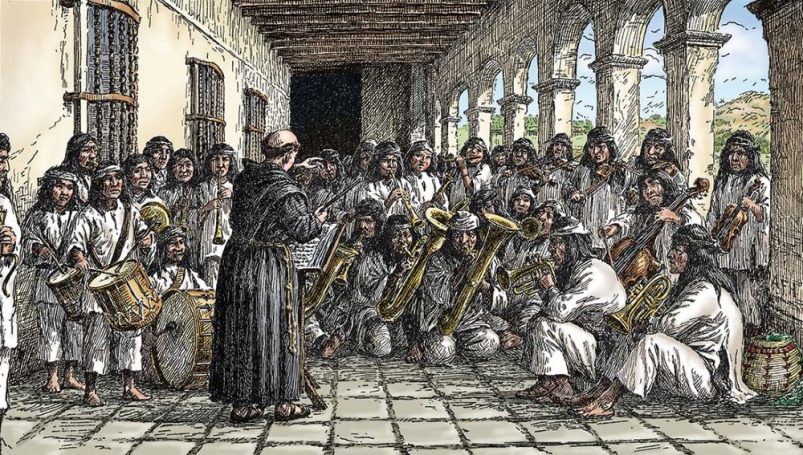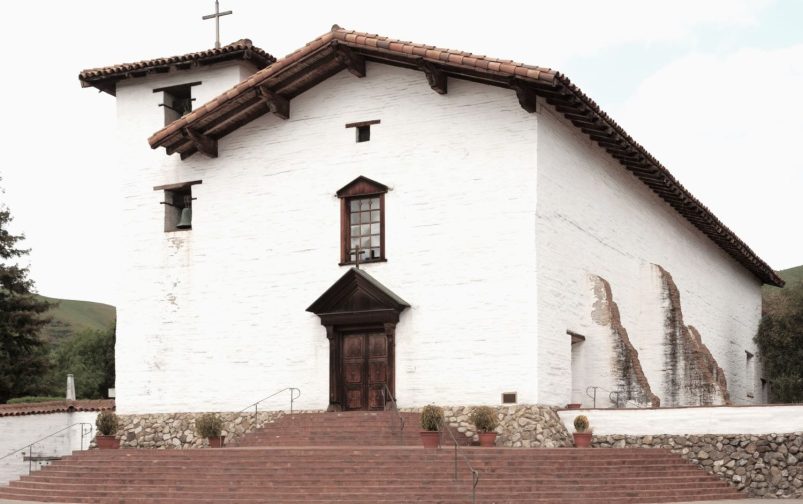The Franciscan Missionaries had long hoped to establish a chain of missions in which each link of the chain would be a day’s ride apart on horseback. By 1796, there were thirteen Spanish missions along the California coast from San Diego to San Francisco.El Camino Real had become a well-traveled road joining north and south, yet there were numerous lonely stretches where hostile, or at least unpredictable, Indians made travel dangerous except for the brave and well-armed.
Father Lasuén and a new Governor thought the time had come to complete the chain and quickly agreed that five more missions were needed. A joint request went to the Viceroy. Founded June 11, 1797, Mission San José became the first of the five.
Located at the western approach to the Central Valley, with its many war-like Indians, San José proved, at first, more strategic militarily than a fertile field for mission endeavor. At the end of the first year, there were only 33 neophytes, yet success came eventually. By 1830 there were nearly 2,000 Indians at Mission San José, making it one of the largest in the north.
Unfortunately, the Spanish soldiers were inclined to be as ruthless in pursuit of a runaway neophyte as of marauding pagans. The Padres fought their own battles to offer forgiveness rather than cruel punishment.

Father Narcisco Durán came to Mission San José in 1806. He was an accomplished musician. He organized and trained an orchestra of 30 Indian musicians, playing flute, violin, trumpet, and drums, which was the wonder of the area. The orchestra played for fiestas and weddings. On feast days, Indians came from Santa Clara and Dolores to hear the Indian orchestra.
During the gold rush days, “Mission San Joe” was an important trading place for the miners, but by then, it wasn’t a real mission any longer.
With secularization, San José Mission apparently had been plundered by the Administrator, José de Jesús Vallejo, and his brother, Mariano. Pío Pico arrived too late, finding little more than a few adobe buildings and an olive orchard to sell to his brother and a friend. Then, an earthquake destroyed the church, leaving just a segment of the monastery intact.
In 1868, a white-frame church and rectory were erected on the foundation of the mission. Great plans to rebuild the mission church on its original site finally bore fruit in 1982. The frame buildings were sold and moved. By 1985 the church had been rededicated, appearing much as it had when first completed in 1809. Once again, the beautiful interior of the church is decorated as it was in the prosperous times of the early 1830s, just before secularization.
